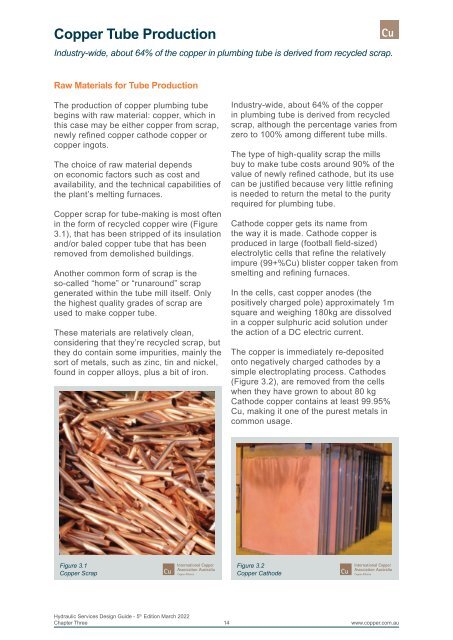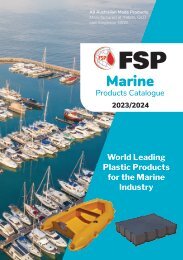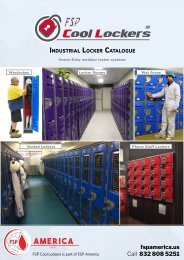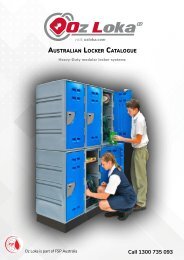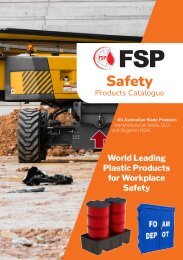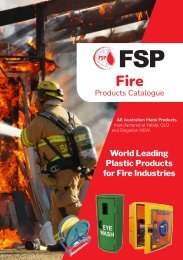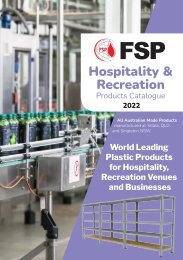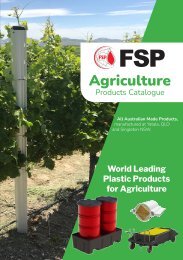Copper Alliance HSDG Australia
Create successful ePaper yourself
Turn your PDF publications into a flip-book with our unique Google optimized e-Paper software.
<strong>Copper</strong> Tube Production<br />
Industry-wide, about 64% of the copper in plumbing tube is derived from recycled scrap.<br />
Raw Materials for Tube Production<br />
The production of copper plumbing tube<br />
begins with raw material: copper, which in<br />
this case may be either copper from scrap,<br />
newly refined copper cathode copper or<br />
copper ingots.<br />
The choice of raw material depends<br />
on economic factors such as cost and<br />
availability, and the technical capabilities of<br />
the plant’s melting furnaces.<br />
<strong>Copper</strong> scrap for tube-making is most often<br />
in the form of recycled copper wire (Figure<br />
3.1), that has been stripped of its insulation<br />
and/or baled copper tube that has been<br />
removed from demolished buildings.<br />
Another common form of scrap is the<br />
so-called “home” or “runaround” scrap<br />
generated within the tube mill itself. Only<br />
the highest quality grades of scrap are<br />
used to make copper tube.<br />
These materials are relatively clean,<br />
considering that they’re recycled scrap, but<br />
they do contain some impurities, mainly the<br />
sort of metals, such as zinc, tin and nickel,<br />
found in copper alloys, plus a bit of iron.<br />
Industry-wide, about 64% of the copper<br />
in plumbing tube is derived from recycled<br />
scrap, although the percentage varies from<br />
zero to 100% among different tube mills.<br />
The type of high-quality scrap the mills<br />
buy to make tube costs around 90% of the<br />
value of newly refined cathode, but its use<br />
can be justified because very little refining<br />
is needed to return the metal to the purity<br />
required for plumbing tube.<br />
Cathode copper gets its name from<br />
the way it is made. Cathode copper is<br />
produced in large (football field-sized)<br />
electrolytic cells that refine the relatively<br />
impure (99+%Cu) blister copper taken from<br />
smelting and refining furnaces.<br />
In the cells, cast copper anodes (the<br />
positively charged pole) approximately 1m<br />
square and weighing 180kg are dissolved<br />
in a copper sulphuric acid solution under<br />
the action of a DC electric current.<br />
The copper is immediately re-deposited<br />
onto negatively charged cathodes by a<br />
simple electroplating process. Cathodes<br />
(Figure 3.2), are removed from the cells<br />
when they have grown to about 80 kg<br />
Cathode copper contains at least 99.95%<br />
Cu, making it one of the purest metals in<br />
common usage.<br />
Figure 3.1<br />
<strong>Copper</strong> Scrap<br />
Figure 3.2<br />
<strong>Copper</strong> Cathode<br />
Hydraulic Services Design Guide - 5 th Edition March 2022<br />
Chapter Three<br />
14<br />
www.copper.com.au


